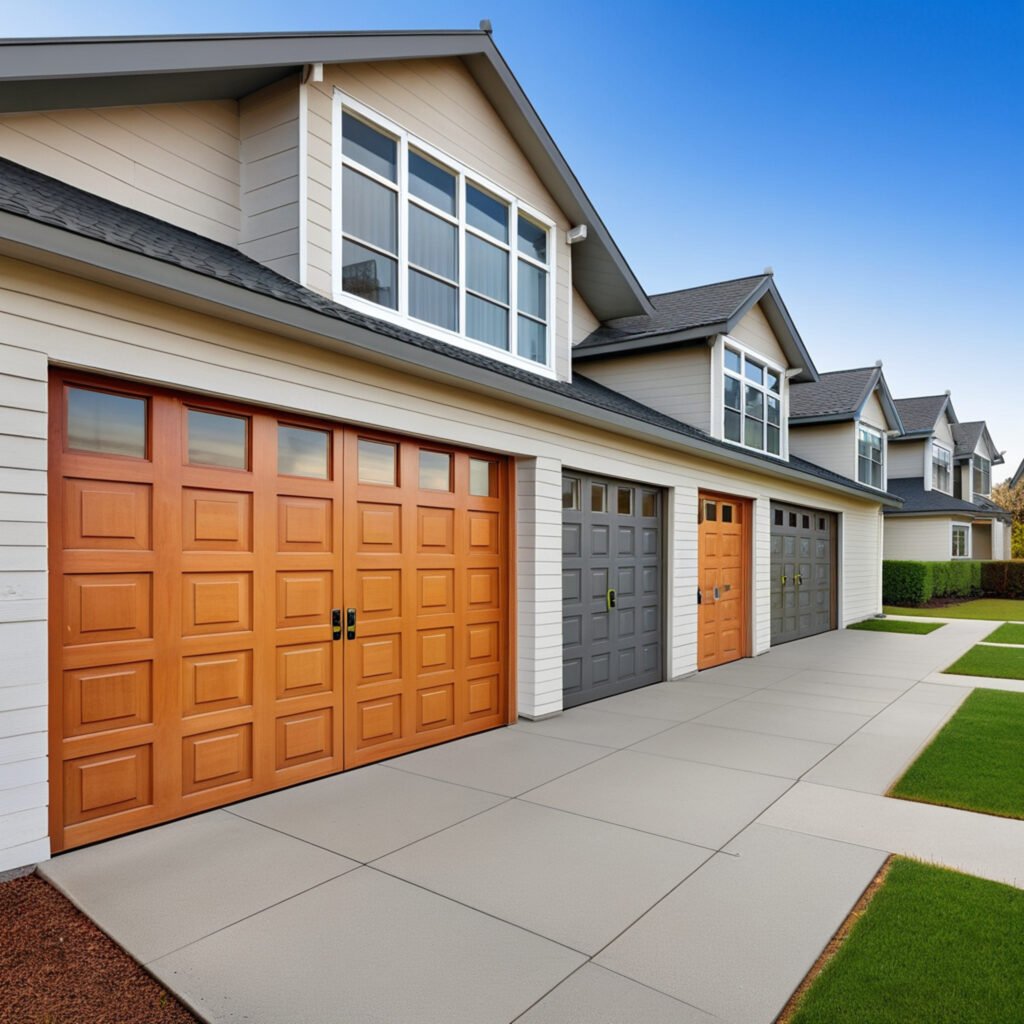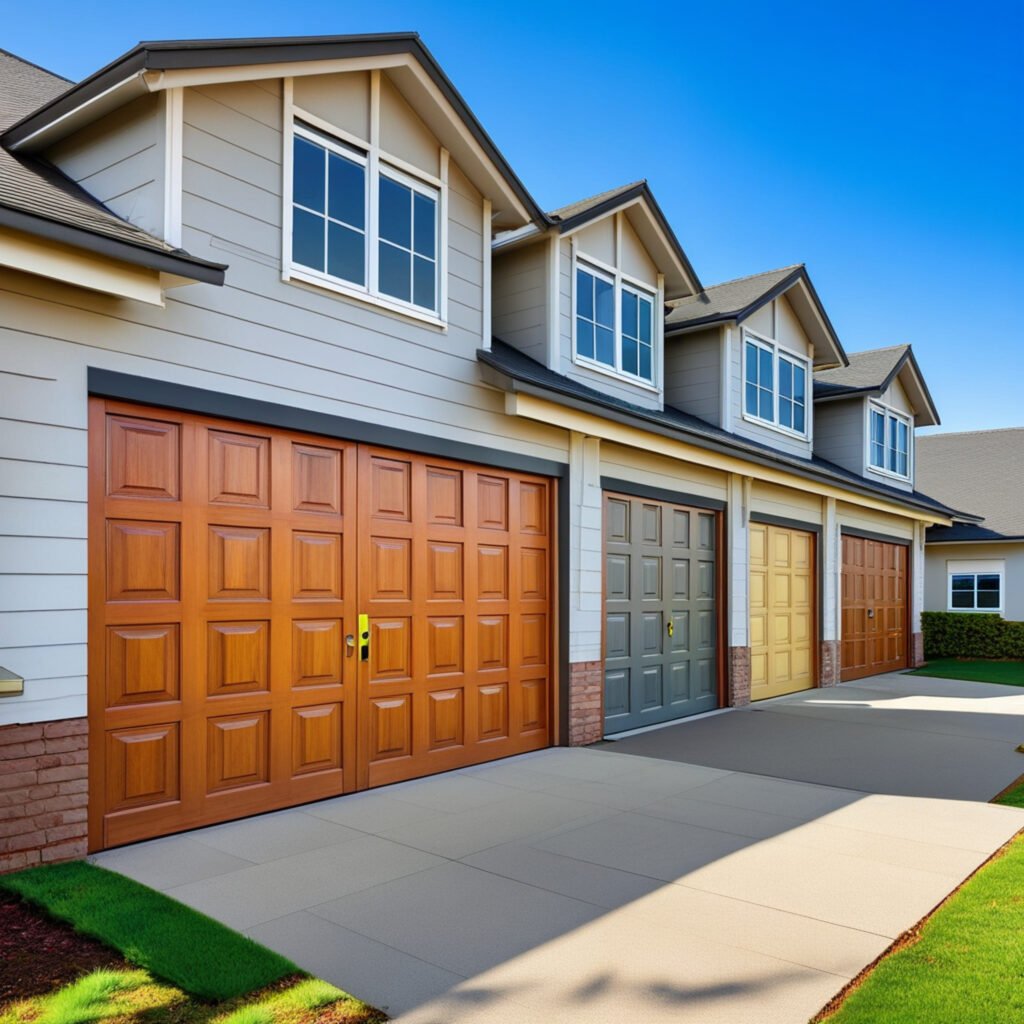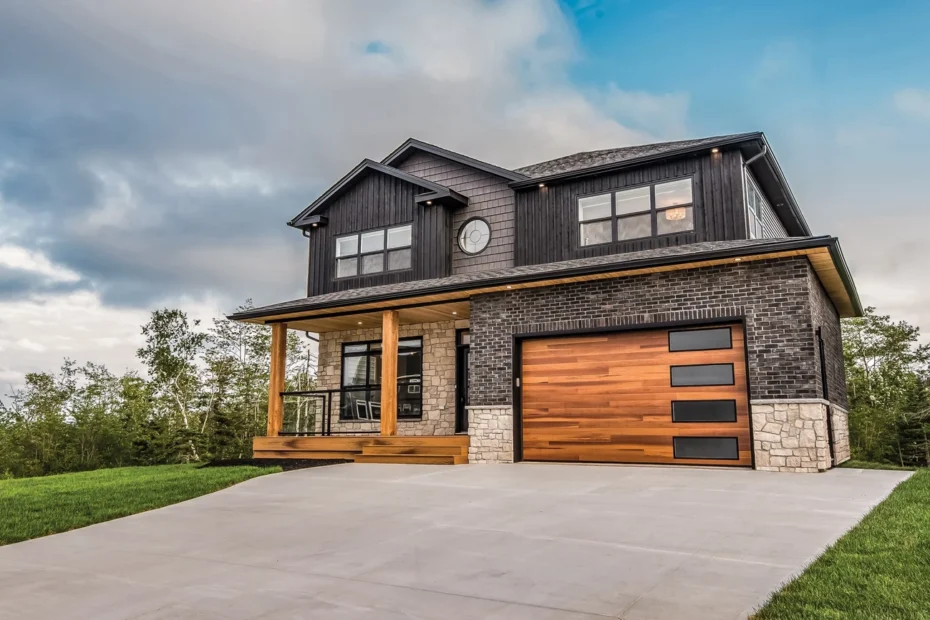Your home’s exterior needs the perfect garage door material. Our team has watched these doors perform in tough conditions. Colorado Springs’ weather puts wood doors to the test with constant freezing and thawing cycles.
Steel leads the pack among garage door materials because it’s tough and adaptable. The most affordable option gives you great value upfront and costs less to maintain. Each material brings something special to the table. Garage doors come in several materials. Wood needs a fresh coat of paint or stain every few years. Fiberglass looks just like wood, but handles moisture better and won’t crack as easily. On top of that, insulated steel doors help control your garage temperature and save energy.
Let’s look at which garage door materials last longest based on ground performance. This guide will help you pick a door that serves you well for years.
What are garage doors made of?
Modern garage doors come in many materials, each with its own benefits and unique features. Here’s a look at the most common garage door material types you can find today.
Steel
Steel tops the list as the most popular garage door material, ranking #1 among homeowners. These doors are tough and can handle daily wear and tear well. You’ll find that steel garage doors keep your home secure and need little upkeep – just clean them once a year with mild soap. They come in many styles and prices, from basic raised panels to fancy carriage house designs with windows. Most steel doors now include insulation that creates a barrier between your garage and home to save energy.
Wood
Wood garage doors add classic beauty to any home’s exterior. Wood was once the only material used to make garage doors. You can customize these doors with different stains and patterns. Most modern wood doors aren’t solid wood anymore. Manufacturers now use plywood or hardboard with wood veneers to create beautiful styles at better prices. Cedar and redwood remain top choices because of their weather resistance.
Aluminum
Aluminum garage doors create a modern, clean look. The light weight of these doors helps garage door openers last longer because they’re easier to lift. They work great in coastal areas and humid places since they don’t rust or corrode. Many homeowners choose aluminum frames with glass panels to let natural light into their garage space.
Fiberglass
Fiberglass garage doors serve as a solid choice among traditional materials. They’re built with a strong fiberglass composite that includes resin and glass fibers. These doors stand up well against moisture, termites, and sun damage. Many look just like wood doors but need much less maintenance.
Vinyl
Vinyl garage doors are almost impossible to break under normal use. While steel doors might dent from a hit, vinyl doors bounce back without damage. The color runs all the way through the material, so these doors keep looking good year after year. All the same, they might get brittle when it’s very cold outside.
Composite and hybrid materials
Composite garage doors blend wood fibers, plastic, and binding agents. Most have a steel core covered with composite material that resists moisture. This combination gives you wood’s beauty with better durability and less maintenance. The composite materials won’t rot, warp, or attract insects.
Glass
Glass garage doors usually come with aluminum frames and create a striking modern appearance. These doors brighten your garage with natural light while keeping your privacy intact through various glass options. You can pick from tempered, laminated, tinted, or frosted glass. These doors use strong commercial-grade aluminum frames and tempered glass panels to ensure safety.
Real-world durability: which garage door material lasts longest?

Not all garage door materials last the same amount of time. Ground testing shows how different materials stand up to daily use.
Steel: strong but prone to dents
Steel garage doors are a top choice because they stand up well against harsh weather conditions. Doors made with thicker gauge steel (with lower gauge numbers) resist dents better. Notwithstanding that, steel’s biggest weakness shows up in its tendency to dent from everyday objects like basketballs or lawn equipment. A door without proper protective coating can develop rust, especially in humid environments or coastal areas with salt exposure.
Wood: beautiful but high maintenance
Wood garage doors look great, but just need regular care to keep their beauty. These doors can warp, rot, and attract pests without proper maintenance. The wood surface needs repainting or staining every 1-3 years to guard against moisture and UV damage. Temperature differences between inside and outside can make wood expand and contract, which leads to cracking—an effect known as bowing.
Aluminum: rust-resistant but soft
Aluminum doors fight off rust and corrosion naturally, which makes them great for humid or coastal areas. Salt-spray tests show aluminum survives 5,000 hours with only mild film buildup. The lightweight nature of these doors puts less stress on opening mechanisms and helps them last longer. The downside comes from aluminum’s 0.040- to 0.060-inch sheeting that creases easily from everyday impacts.
Fiberglass and vinyl: weather-resistant options
Fiberglass doors handle changing weather well and offer nine times the strength of vinyl doors. Vinyl doors can take hits that would dent metal doors without showing damage. Both materials handle moisture well, and vinyl works great in humid or coastal areas. Sharp blows can crack fiberglass, and very cold temperatures can make it brittle.
Composite: best of both worlds?
Composite garage doors mix materials to get the best results. These doors usually have a steel base with a moisture-resistant composite overlay that gives you wood’s beauty with steel’s strength. They typically last 15-20 years, though high-quality ones can reach 30 years with good care. You get protection against warping, rot, and pest damage without much maintenance.
Garage door material comparison by climate
Your area’s climate will determine which garage door material works best in the long run. Let’s get into how different materials stand up to the weather of all types.
Cold and snowy regions
Insulation is vital for garage door performance in freezing environments. Steel doors with polyurethane foam insulation are your best bet for handling snow and wind. You’ll want doors with R-values between 12-16 to keep indoor temperatures stable. Insulated wood doors can do the job, but need extra care in dry-cold weather. We found that heavy-duty insulated doors are needed to handle heavy snow loads without buckling.
Hot and sunny climates
Materials that don’t absorb heat or fade work best in areas with strong sunlight. Fiberglass and vinyl garage doors handle long sun exposure without warping. Aluminum doors stay cool when you touch them, which makes them perfect for hot weather. Light finishes and reflective coatings on steel doors help control heat buildup. UV-resistant finishes stop colors from fading as time passes.
Humid or coastal areas
Salty air and humidity speed up rust formation, so you need special materials. Vinyl garage doors thrive here because they resist dents, warping, and moisture damage. Fiberglass also works great at keeping mold and mildew away. Aluminum never rusts, making it a top pick for coastal areas. Steel doors need galvanized coatings and rust-resistant hardware to last near the ocean.
Dry and high-altitude zones
Some materials crack or fade too soon in dry, elevated areas. Fiberglass and steel with UV protection hold up well at high altitudes. Vinyl stays crack-free and keeps its color with minimal maintenance. Doors need low-absorption finishes and proper insulation to work their best. The door’s design must account for high-altitude conditions in all its parts, not just the outside.
Other factors that affect garage door lifespan

Your garage door’s lifespan depends on more than just the materials used. Several significant factors will determine if your door lasts for decades or fails early.
Insulation and energy efficiency
The way your garage door material handles insulation will affect its performance and durability. Doors that use polyurethane foam insulation work better than those with polystyrene and provide enhanced protection from temperature changes. Manufacturers measure insulation quality through R-values (higher is better) and U-factors (lower is better). Doors with proper insulation face less stress from expanding and contracting with temperature changes, which helps them last longer. Your living spaces stay more comfortable when insulated doors protect attached garages from energy loss.
Maintenance needs over time
Your door will last longer with regular upkeep, whatever material you choose. You just need to lubricate moving parts, check springs, and tighten hardware twice a year. Steel doors are easy to maintain – a yearly wash with soap and water does the job. Wood doors, however, are more demanding and need detailed care like sanding, sealing, and painting every 1-3 years. Skipping these basic maintenance steps can get pricey and cause early failures.
Installation quality and usage frequency
Professional installation will give a properly working door, while DIY attempts often create alignment problems that speed up wear and tear. Most garage doors should work for 10,000 cycles of opening and closing. Families who use their garage frequently should think about upgrading to springs that last 20,000 cycles. Poor installation creates operational problems, wears out parts faster, and might be dangerous.
Cost vs. long-term value
The price tag on your garage door material is just one part of what you’ll spend over time. Steel doors might cost more at first, but are economical solutions because they need less maintenance. You can cut your heating and cooling costs by up to 15% each year with insulated doors. Quality components and professional installation ended up saving more money than choosing the cheapest option available.
Conclusion
Your specific needs, location, and priorities will help you pick the right garage door material. Our tests show that steel is the most versatile choice. It gives you great durability and value, though it can get dented. Wood doors look amazin,g but you’ll need to take good care of them to stop warping and rotting.
The climate where you live plays a vital role in how long different materials last. Vinyl and fiberglass work great in humid coastal areas. Insulated steel doors do really well in cold, snowy regions. Houses in sunny spots need materials with UV-resistant finishes to prevent fading and wear.
Quality installation, regular upkeep, and how often you use the door substantially affect its lifespan. Doors installed by professionals with quality parts might cost more upfront. They usually save you money over time through fewer repairs and lower energy bills.
Look at both your current budget and future maintenance needs before deciding. The most durable door isn’t always the priciest one. The best choice matches your area’s weather conditions and gets proper care throughout its life. This knowledge about garage door materials helps you make a smart investment that will improve your home’s looks, security, and value for many years.
